Clancy Tucker's Blog, page 167
December 7, 2017
8 December 2017 - Wildlife Photographer of the Year 2017 finalists
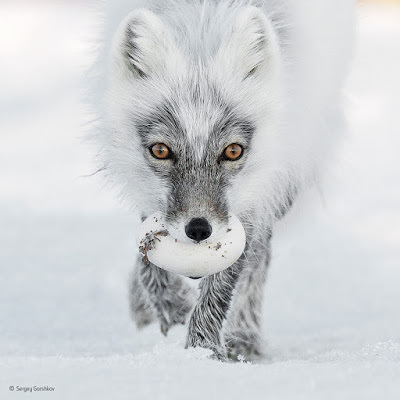
Wildlife Photographer of the Year 2017 finalists G'day folks, It’s Wildlife Photographer of the Year time once again at the Natural History Museum with photographers pulling off the seemingly impossible in their quest to capture the natural world. Here’s a selection of the 2017 finalists.
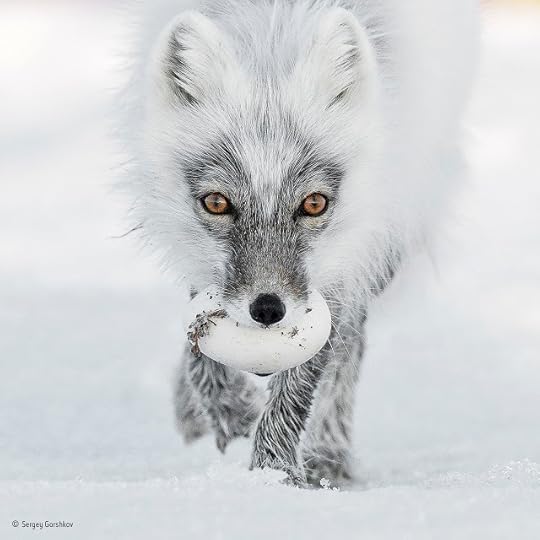
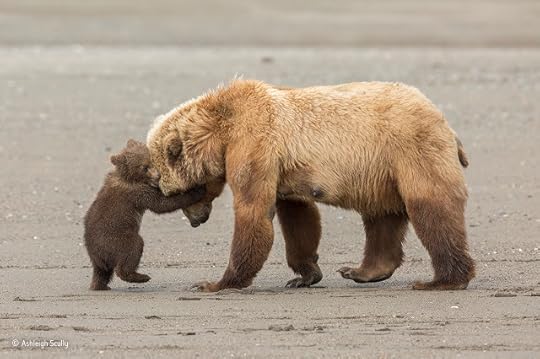


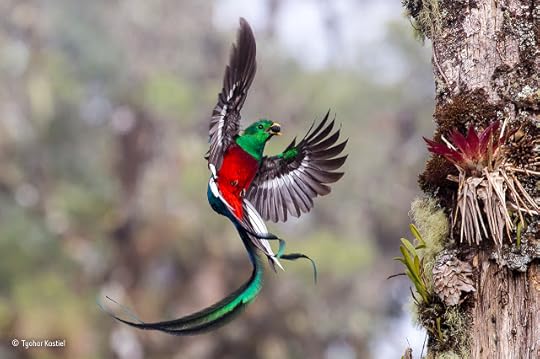



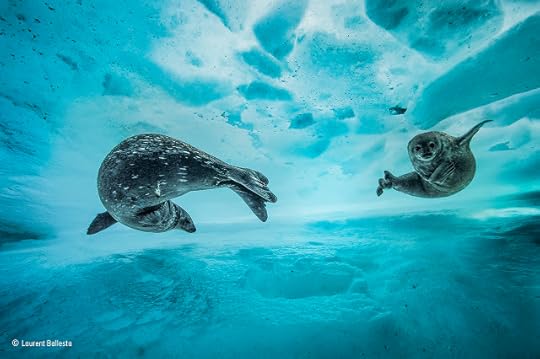

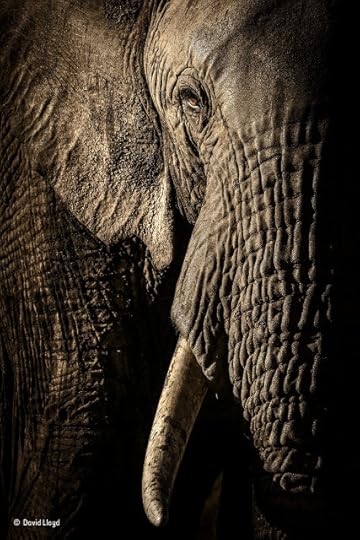

Clancy's comment: Wow. Thank you to all of these photographers. I guess they were there at the right time and pressed the button. Love ya work!
I'm ...


Published on December 07, 2017 11:20
December 6, 2017
7 December 2017 - ASIA'S CLEANEST VILLAGE
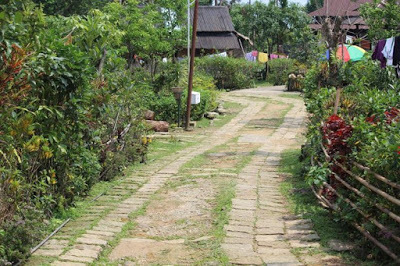
ASIA'S CLEANEST
VILLAGE
G'day folks,
One of the biggest scourges in Asia is the constant use of plastic bags. However ...
From discarded plastic bottles and wrappers to the cow dung littering the streets of major cities like Delhi, trash is a big problem in India, but not in the small village of Mawlynnong. People here have zero tolerance for garbage and spend a lot of their time making sure every square inch of their village is spotless.
Mawlynnong first made news headlines in 2003, when a journalist from Discover Magazine dubbed it “Asia’s cleanest village”.
After hearing about this place where everyone, from young children to the elderly, was dedicated to maintaining a state of complete cleanliness, he decided to investigate, and was so impressed by what he witnessed during his stay that he deemed Mawlynnong worthy of the title of cleanest village in all of Asia. His article drew a lot of attention to the community of around 600 people in the Indian state of Meghalaya, and people from all over the world started traveling there to see this example of cleanliness for themselves.
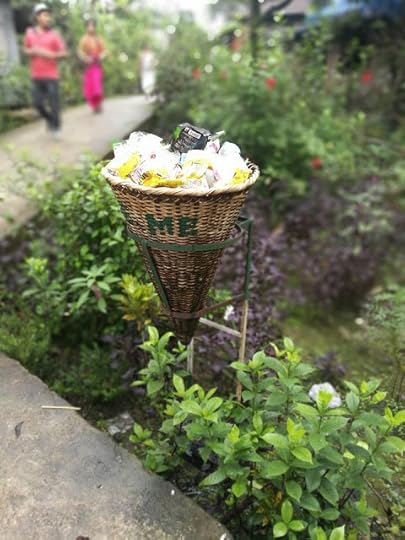
It all sounds like a clever marketing gimmick to attract tourism, but Mawlynnong is much more than that. For as long as the locals can remember, keeping their village squeaky clean and beautiful has been everyone’s top priority. No one knows exactly how this obsession with cleanliness began. Some believe that it was an outbreak of cholera, some 130 years ago, when cleanliness was encouraged to stop the disease from spreading, while others credit the traditionally matrilineal society of the local Khasi people, with the dominant role of women as the main driver for cleanliness and sanitation. One thing is for sure, though, these values have been passed down from the elderly to the young, for generations.
You’re probably wondering how clean Mawlynnong really is, right? It’s really, really clean, thanks to a very simple yet effective system that involves everyone in the community. Every morning, all the children in the village pick up their teasel brooms and sweep the streets of dirt and fallen leaves – there’s not much else – before going to school. They are also responsible for emptying the bamboo trash baskets and separating the waste into organic matter, reusable plastic and burnable garbage.

Collected leaves are buried in a large pit and turned into compost, most of the plastic is repurposed within the community, and the rest is burned on the outskirts of the village. Smoking and the use of plastic are actually banned in the village, but some plastic does end up in the collected trash, from tourists. They are also the ones who sometimes litter, but the locals never scold them for it. Instead, they just pick up after them, making sure that their home remains as pristine as ever.
Mawlynnong is one of the very few Indian communities where every household has its own toilet, making open defecation a non-issue.
The whole village runs almost exclusively on clean energy, mostly solar, and employs teams of dedicated gardeners that ensure that the beautiful flowers and plants lining the roads and alleys are well taken care of.

And it’s not just the public areas of Mawlynnong that are incredibly clean and tidy. The same can be said for every household in the village, as this BBC article points out. The importance of cleanliness is so deeply embedded in the culture of this place that you can see it in everything and everyone.
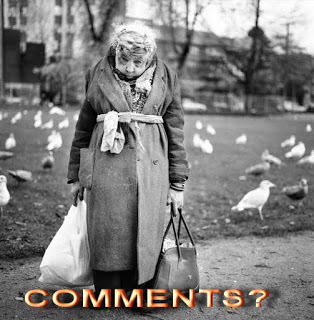
Clancy's comment: Wow, more power to them.
I'm ...
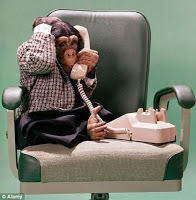

Published on December 06, 2017 12:44
December 5, 2017
6 December 2017 - PATRICIA O’SHANE AM
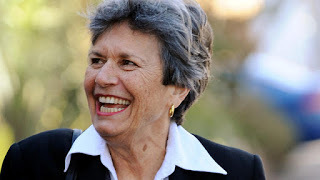
PATRICIA O’SHANE AM
G'day folks,
Welcome to some background notes on an Aboriginal woman I admire. Patricia June "Pat" O'Shane AM, is an indigenous Australian of the Kunjandji clan of the Yalangi people.
Patricia O'Shane was born in Northern Queensland in 1941. A noted activist for indigenous rights, her achievements in the public sphere have been remarkable. She was the first Aboriginal Australian Barrister (1976) and the first woman to be appointed to the New South Wales Metropolitan Water, Sewerage and Drainage Board (1979). When she was appointed permanent head of the New South Wales Ministry of Aboriginal Affairs in 1981, she became not only the first Aboriginal person but also the first woman to become a permanent head of ministry in Australia.

Patricia O'Shane was born in 1941 in the small township of Mossman, North Queensland. She attended State primary and high schools in Cairns, and was awarded a Teacher's Scholarship, which enabled her to study full-time at the Queensland Teachers' Training College, and part-time at the University of Queensland. After graduating from Teachers' College, she taught at primary and high schools respectively before and after her marriage. In 1973, having received an Aboriginal study grant from the Federal Government, she undertook a Bachelor of Laws degree at the University of New South Wales, and completed the course at the end of 1975.

In March 1976 she became Australia's first Aboriginal Barrister at a ceremony in the New South Wales Supreme Court. In 1979 she was appointed a Member of the New South Wales Metropolitan Water, Sewerage and Drainage Board - the first female member in the Board's 91-year history. She has worked with the New South Wales Select Committee of the Legislative Assembly on Aborigines, as Coordinator of the Aboriginal Task Force. In November 1981 Pat O'Shane was appointed permanent head of the New South Wales Ministry of Aboriginal Affairs, becoming not only the first Aboriginal person but also the first woman to become permanent head of a ministry in Australia.
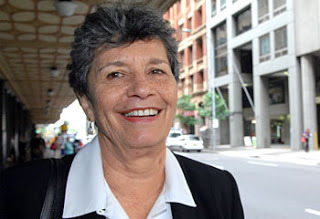
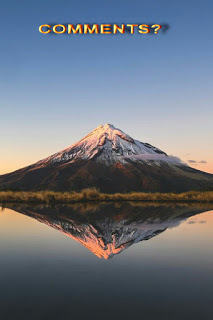
Clancy's comment: Go, Pat! Love ya work! This lady has always impressed me. She says it as it is, and always makes sense.
I'm ...
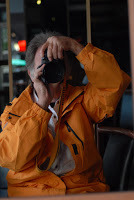
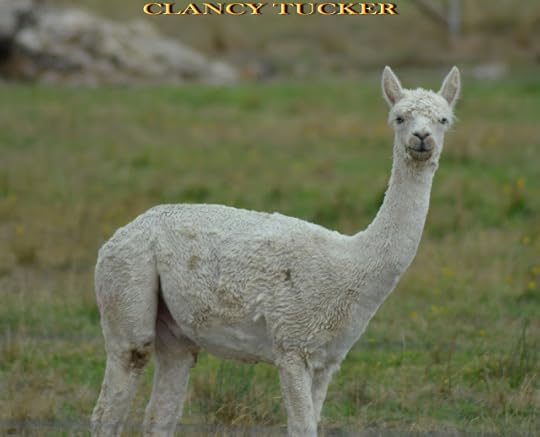
Published on December 05, 2017 12:04
December 4, 2017
5 December 2017 - FACTS ABOUT THE GREATER BILBY
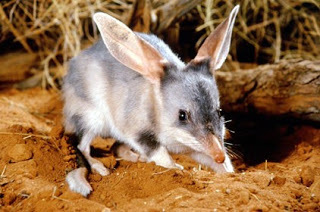
FACTS ABOUT THE GREATER BILBY
G'day folks,
Welcome to some facts about a cute Aussie. Greater bilbies are commonly known as bilbies due to the lesser bilby now being extinct. They are marsupials found only in Australia and are also called rabbit-eared bandicoots. The Easter Bilby is an Australian alternative to the Easter Bunny.
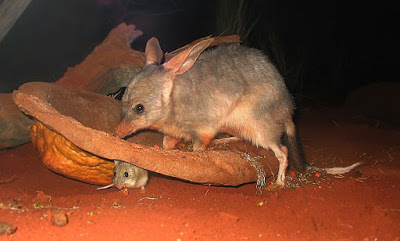
Bilbies prefer habitats that are hot and dry like in Central and Western Australia. They live in spiral burrows which makes it more difficult for predators to get in. They prefer grassy areas so that they can move around easily without being detected by predators.A bilby will dig a new burrow every couple of weeks and use every one of them.Bilbies are nocturnal and will leave their burrows at night to forage for food. Their diet consists of plant bulbs, spiders, termites and grass seeds.Bilbies do not need to drink water as they can retain the moisture from their food in their body.They have a soft white and grey coat, long ears and a pointed nose. Their thick claws and forelimbs help them dig burrows quickly.Male bilbies are roughly the same size as rabbits. Female bilbies have a pouch which carries an undeveloped foetus (a joey) until it grows into a juvenile. Their pouches face backwards to prevent dirt getting in whilst digging.The bilby is an endangered species because of habitat loss, climate change and competition with other animals. Introduced predators such as foxes and cats have also caused a decrease in population numbers.There have been many conservation efforts to save bilbies. This includes captive breeding, population monitoring, creating predator free reserves. Chocolate Easter Bilbies were also introduced as a way to popularise the animal with some profits being donated to bilby protection and conservation research.The word bilby comes from the Aboriginal language Yuwaalaraay which means “long-nosed rat.”


Quick FactsType: MammalDiet: OmnivoreLife span: 6-7 yearsSize: Up to 55 cm, tail up to 30cmWeight: Up to 2.5kgHabitat: Dry and hot with open grasslandRange: Central and North Western AustraliaScientific name: Macrotis lagotis
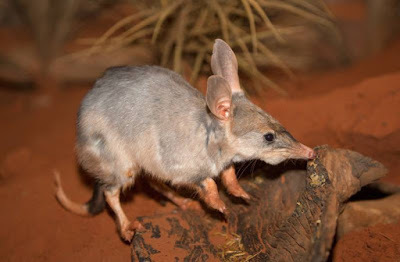
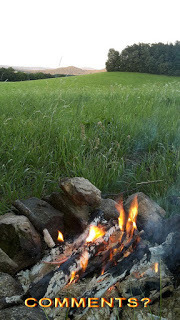
Clancy's comment: Cute, eh? Wow, they don't drink water! Yes, chocolate ones are sold here at Easter.
I'm ...

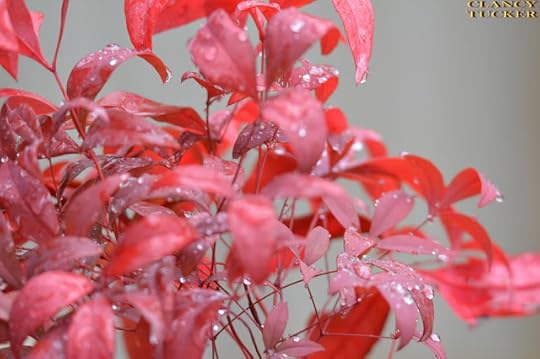
Published on December 04, 2017 13:11
December 3, 2017
4 December 2017 - SARAH BOURNE - GUEST AUTHOR
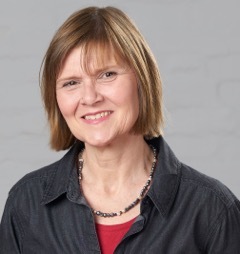
SARAH BOURNE- GUEST AUTHOR -
G'day folks,
May I introduce another interesting writer from Australia.
Welcome, Sarah ...
1. TELL US A LITTLE ABOUT YOURSELF AND YOUR WRITING JOURNEY.
I started writing about eight years ago. My children were growing up and needing less of my time, and I wanted to do something creative. My first idea was to do a photography course, but my eldest daughter was away on exchange and had taken the good camera with her, so I sat down with a pen and paper and started writing a story instead. That ‘little’ story became a YA paranormal romance trilogy – about 400,000 words in all! It’s not published yet, but my agent is having a look over it at the moment, so who knows?
2. WHEN AND HOW DID YOU BECOME A WRITER?
I’m still not sure I’m a writer. I am in awe of people like Kate Atkinson and Hilary Mantel, Salman Rushdie and Paul Auster – they’re real writers. People with big stories and fantastic skill at telling them. I love writing, and am happy that people read my books, but I feel a bit of a fraud calling myself a writer!
3. WHAT TYPE OF PREPARATION DO YOU DO FOR A MANUSCRIPT? DO YOU PLAN EVERYTHING FIRST OR JUST SHOOT FROM THE HIP?
I love the creative process. That said, each of my books has come about in a completely different way. I often think of the characters first, and flesh them out. I write extensive character profiles for them so I know them intimately. Then I start asking myself questions about what how they might react in different situations. Usually, one stands out as more interesting than the others, and I start from there – putting a character in a sticky spot and seeing what happens.
A couple of times I have planned the whole book before I started writing, even doing detailed chapter outlines. It was a complete waste of time, as the characters hijacked what I had planned for them and took over, making the book different to the one I had intended, and probably more interesting!
4. WHAT DO YOU ENJOY MOST ABOUT BEING A WRITER?
I love immersing myself in the world of my characters. Not literally another world, I don’t write sci-fi, but the places they go, the people they meet, the things they do. My characters are often more ‘out there’ than I am, take more risks, and do things I wouldn’t. It’s nice to be along for the ride though.
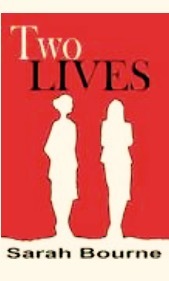
5. WHAT IS THE HARDEST THING ABOUT BEING A WRITER?
Self doubt. While I’m writing, I usually think the work has some merit – I guess I wouldn’t continue with it if I felt otherwise, but when it’s finished and I’ve left it for a few weeks, I look at it again and wonder if anyone would ever want to read it. I have a bit of a slump, it happens every time, and then I start the revising and editing and get it into shape. Then letting it go is hard, wondering if I really have done all I could. I heard an interview with Geraldine Brooks (another favourite author of mine) and she said that she often wishes years later that she could go back and change things in her books, so I suppose that question, ‘is this as good as it can be?’ haunts us all.
6. WHAT WERE YOU IN A PAST LIFE, BEFORE YOU BECAME A WRITER?
I trained as an Occupational Therapist after school and worked in Mental Health for some years. I also travelled a lot, including cycling round India and Nepal. I am from the UK, but have lived in the US, Japan and now Australia. Now I have my own counselling practice, teach yoga and volunteer at a Hospice writing biographies for people with a terminal illness.
7. WHAT IS YOUR GREATEST WRITING ACHIEVEMENT?
That’s a hard one. I have two published novels, one being touted by my agent at the moment and another being published next year. I’ve won a couple of awards for short stories too, and written for some blogs. I think, though, that the greatest achievement was the first story – the one that turned into the YA trilogy. It isn’t published, and may never be, but it gave me the confidence to keep going and I certainly learned a lot along the way!
8. WHAT ARE YOU WORKING ON AT THE MOMENT?
I’m working on a novel that I’ve been thinking about for a couple of years. It’s been a tough one to write – I have the story all worked out but have had difficulty working out how to structure it. Also it required a fair amount of research into settings and also obsessive love which my protagonist struggles with. It’s been very frustrating trying to find the right way to tell the story. One of my friends suggested that I write a scene in which my character was doing something unusual, to see if I could write myself into the book. That was last year, and resulted in a totally different novel! I am happy to say, however, that I think I’m on my way now, nearly 30,000 words into the book I wanted to write, and going strong, even though the characters have changed the plot from the original in places. Fingers crossed.
9. WHAT INSPIRES YOU?
Many things inspire me. I love getting out into the Australian bush – the colours are so different to anything in England, where I grew up, and the light is amazing. I also find people inspiring. Not important, famous people, but the people I meet every day; friends, counselling clients who are struggling with the issues in their lives but determined to keep moving forward, the patients I meet in the Hospice. Everyone has their challenges, their successes and a story to tell.

10. WHAT GENRE DO YOU WRITE?
After the YA trilogy I switched to literary fiction. I love to write strong characters in difficult situations.
11. DO YOU HAVE ANY TIPS FOR NEW WRITERS?
Read, read and read some more. And write, even if you think it’s rubbish. Get a first draft down and then you’ve got something to work on. And just getting a draft done is more than most people manage, so build on your successes, even if they feel small.
12. DO YOU SUFFER FROM WRITER’S BLOCK?
I don’t really know what writer’s block is. I certainly have periods where the book isn’t progressing, but I always have something knocking around that needs editing, or a new idea that needs filling out or researching, so I don’t worry too much if the work in progress is stalled for a while. I know I’ll come back to it and it’ll start moving along again.
13. DO YOU HAVE A PREFERRED WRITING SCHEDULE?
I would love to say yes to that, but in all honesty, I can’t. I have three part time jobs, two teenage kids still living at home, dogs that need walking and a house that doesn’t clean itself. So I write when I can. Usually I manage a couple of hours a day, but they might be at six in the morning or lunchtime or after dinner.
14. DO YOU HAVE A FAVOURITE WRITING PLACE?
I write wherever I am. Often that’s the family room with the dogs on either side of me and the cat trying to sit on the keyboard. I am a member of a Writer’s Centre locally, and sometimes borrow a room there if I need to get away for a few uninterrupted hours. I was once leant a house at the beach for a few days and wrote looking out over the ocean – that was fabulous, I’d like to do that again!
15. WHAT IS YOUR GREATEST JOY IN WRITING?
My greatest joy is watching a story that’s been in my head unfold onto the page. As I said earlier, it’s often not exactly the story I thought it was going to be, but that’s the excitement; how characters interact with the plot and with each other.
16. WHO IS YOUR FAVOURITE AUTHOR AND WHY?
I have several favourite authors. I love Kamila Shamsie for her brilliant characters and characterization. She really is a genius. William Nicholson for his gentle portrayal of everyday life in England, JK Rowling for bringing us Harry Potter, Sarah Winman for her whimsical stories, Hilary Mantel for her historical works…the list goes on.
17. WHAT’S THE GREATEST COMPLIMENT YOU EVER RECEIVED FROM A READER?
My second novel Two Lives, involves a woman leaving a relationship in which she has suffered domestic violence. A woman I knew vaguely came up to me when she’d read it and thanked me for writing it; her sister was in a similar situation, and she’d given it to her to read, and it had given her the courage to leave the abusive relationship.
One of the funniest comments I got was a friend’s husband asking if I’d based one of the characters on him! (I hadn’t).
18. WHAT WAS THE WORST COMMENT FROM A READER?
I had an email from a reader with a list of questions; why did the protagonist do this, not that, why didn’t the police get involved, why, why, why…I felt defensive, and felt I should answer all her questions, but then I thought, no, I wrote the book I wanted to write. In the end I emailed back and thanked her for reading the book and left it at that.

19. WRITERS ARE SOMETIMES INFLUENCED BY THINGS THAT HAPPEN IN THEIR OWN LIVES. ARE YOU?
Undoubtedly, but none of the actual events in my life end up in the books. I think the way I see the world obviously influences what the characters do and say, although I do try and give them their own opinions. There is a piece of advice that gets pulled out every so often: write what you know. I think if we only did that, we’d end up writing boring books. So I watch other people, read a lot and try and make my characters more interesting than me.
20. OTHER THAN WRITING, WHAT ELSE DO YOU LOVE?
I love people, yoga, swimming, walking the dogs, travelling, hanging out with family and friends, reading and skiing, to name a few things.
21. DID YOU HAVE YOUR BOOK / BOOKS PROFESSIONALLY EDITED BEFORE PUBLICATION?
I belong to a writer’s critiquing group which helps me iron out plot issues, and I use beta readers too, who I find invaluable. My sister has a PhD in Literature, so she’s my main editor once everyone else has had their say. I really value her input.
22. DESCRIBE YOUR PERFECT DAY.
Early morning yoga, breakfast with the family before we all scatter to begin our days, writing, walking the dogs, maybe a swim after lunch, then back to writing. Dinner, chat, bed and book. If pressed, I wouldn’t say no to a week in a five-star resort though!
23. IF YOU WERE STUCK ON A DESERT ISLAND WITH ONE PERSON, WHO WOULD IT BE? WHY?
I know I should say my husband, and he would certainly be very handy on a desert island, but if I were to choose someone else it might have to be a stranger – someone whose stories I hadn’t already heard and who hadn’t heard mine.
24. WHAT WOULD YOU SAY IF YOU HAD THE CHANCE TO SPEAK TO WORLD LEADERS?
Be kind – to people, to the planet, to refugees, to the environment. The world would be a better place with a bit of cooperation. Naïve, maybe, but true.
25. WHAT ARE YOUR PLANS FOR THE FUTURE?
I have several more books in the pipeline – either in the writing phase, the ‘waiting in the bottom drawer’ phase, or in revisions and editing. I am also doing a course at the moment to become a Death Amicus – someone who can help people who have a life-limiting illness, and their families move through that time in the best way for them. I think as a society we are not very good at facing end of life issues, and they need to be brought into the public discourse.
26. WHAT ARE YOUR VIEWS ON BOOK TRAILERS? DO THEY SELL BOOKS?
I have never made one, nor bought a book having seen one, so for me, I would say no. But I do believe they appeal to a section of the reading population, and perhaps more to certain genres – sci-fi and fantasy perhaps. I tend to buy books by authors I haven’t read before on personal recommendation or having heard them interviewed on the radio or after reading a blog such as this!
27. DO YOU SEE YOURSELF IN ANY OF YOUR CHARACTERS?
I see glimpses of myself in all my characters – a turn of phrase, a physical characteristic, an opinion. I don’t think it can be helped, because as writers we can’t completely get out of our own way. I think if anyone tries to claim that there is nothing of them in their books, they’re either lying or deluded; even making the effort not to put anything of yourself in means that you’re there all the time, making that decision!
28. DOES THE PUBLISHING INDUSTRY FRUSTRATE YOU?
Yes and no. Yes, because it’s annoying having to wait for decisions to be made, for queries to get answered, and those rejections that we all get always hurt. I also think that the whole model of the industry is wrong. The authors, on whom everything rests, get so little money from their product. Most of it goes to the publisher, the distributor the bookshop and a host of other people in the chain. I think if I worked out how much I got for writing, redrafting and editing a book, it would amount to about 0.0001 cents an hour!
And no, because they publish the books I love to read!
29. DID YOU EVER THINK OF QUITTING?
No. I can’t stop. There are stories to tell, and in the end, the money doesn’t matter. It would be nice to be a JK Rowling or a Stephen King, but it’s the writing that matters.

30. WHAT WAS YOUR FAVOURITE MANUSCRIPT TO WRITE? WHY?
They’re all my favourite at the time of writing. I think each book is better than the last, not because of the story, but because the more I write the better I get at it. I was incredibly proud of Never Laugh at Shadows when it was published because it was my first, and I loved the protagonist, a feisty young Ugandan Law student caught between two cultures.
The book that’s with my agent at the moment was fun to write because the protagonist has amnesia, and it was interesting to think about the part memory plays in defining who we are. I like writing books that make me think, because they’ll hopefully then make the reader think too.
31. HOW WOULD YOU DEFINE ‘SUCCESS’ AS A WRITER?
Not money, that’s for sure! I read somewhere recently that the average earnings an author makes from writing novels is $2,000 a year. I won’t be travelling First Class on that kind of income. For me, success is someone telling me they enjoyed or were moved by my books. The woman I spoke about earlier, who left an abusive relationship after reading Two Lives – that was a success of a kind.
32. WHAT SHOULD READERS WALK AWAY FROM YOUR BOOKS KNOWING? HOW SHOULD THEY FEEL?
I’d like readers to know that I gave them the best book I could write and I hope they felt a connection with the characters as they read, and cared about what happened to them. I would like them to feel they have got their money’s worth and have a sense of satisfaction.
33. WOULD YOU LIKE TO HAVE YOUR BOOKS MADE INTO MOVIES? EVER WRITTEN A SCREENPLAY?
I’d love to see my books on the big screen – or even the little one. My father, bless him, read my first book and the first thing he said was, “Steven Spielberg should make that into a movie!” I’m not sure Steven Spielberg would be the right director for my books, but if he offered, I wouldn’t turn him down! I haven’t written a screenplay – I’m not sure I could, to be honest.
34. HOW MUCH THOUGHT GOES INTO DESIGNING A BOOK COVER?
Not enough. I’m not happy with the covers of either of my published books. They were produced by a small publishing house with a small budget and an autocratic publisher. He wouldn’t discuss the covers because he said he knew best. I still don’t think he did. The cover of Two Lives is terrible – I sent him an idea drawn by my daughter and he used it without changing it – it’s basically a sketch. Awful.
35. WHAT’S YOUR ULTIMATE DREAM?
To keep writing and build a loyal readership. I would love to think there are people out there in the world somewhere talking about my books and waiting for the next one to come out.
36. WRITING IS ONE THING. WHAT ABOUT MARKETING YOU, YOUR BOOKS AND YOUR BRAND? ANY THOUGHTS?
I’m not good at any of that – it’s on my lost of things to learn more about. I have a friend who is also a writer, and he is a genius at it. He has promised to sit down with me and teach me what he’s learned along the way. I do have a website/blog, but I don’t write often enough. I use Facebook, Twitter, and LinkedIn, but not that effectively. I have done a few radio interviews here in Sydney, and one in Hong Kong, which I enjoy, and I’m always happy to talk about writing in general and my books in particular at libraries and so on, but I do need to do more.
37. ARE YOUR BOOKS SELF-PUBLISHED?
No, they were published by a small publisher. I am grateful for getting started that way, but now have an agent and hope my next book will find a home at a larger publishing house.

38. DESCRIBE YOURSELF IN FIVE WORDS.
Curious, compassionate, loyal, persevering and generous.
39. WHAT PISSES YOU OFF MOST?
Badly written or edited books that become best sellers.
40. WHAT IS THE TITLE OF THE LAST BOOK YOU READ? GOOD ONE?
A Year of Marvellous Ways by Sarah Winman. I absolutely loved it. The characters were quirky and interesting, the writing was sublime and the story was complex and satisfying.
41. WHAT WOULD BE THE VERY LAST SENTENCE YOU’D WRITE?
I can’t imagine that – it would be whatever makes sense in the context of the story I was writing at the time, but I don’t know if I’d actually know it was the last line I’d ever write. I hate to think that I might run out of words one day.
42. WHAT WOULD MAKE YOU HAPPIER THAN YOU ARE NOW? CARE TO SHARE?
I am generally happy with my life these days. At a global level I’d like more action on climate change and kindness to refugees, an end to poverty and hunger – you, know, the little things! At a personal level, I’d be over the moon if one of my books hit a best seller list. But if my life carries on in the track it’s on at the moment, that wouldn’t be too bad.
43. ANYTHING YOU’D LIKE TO ADD?
That’s about it. Thanks for your questions.

AMAZON
NEVER LAUGH at SHADOWS
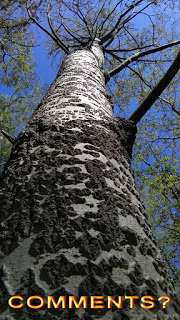
Clancy's comment: Thank you, Sarah. I love many of your responses. Well done. Keep going.
I'm ...

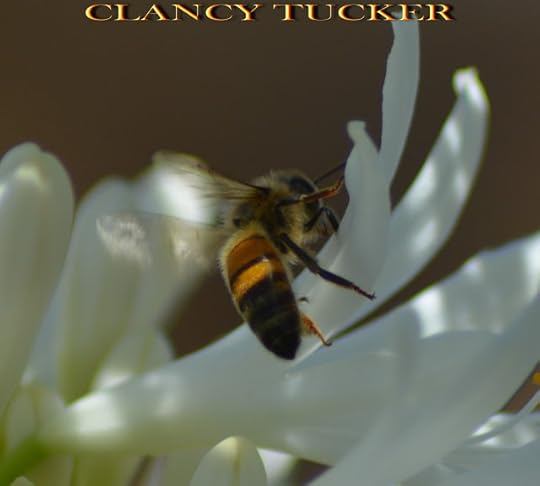
Published on December 03, 2017 12:12
December 2, 2017
3 December 2017 - GRAVITY-DEFYING ART

GRAVITY-DEFYINGART
G'day folks,
Stacking coins in a simple tower can get pretty challenging after it reaches a certain size, but that’s child’s play compared to what this Japanese artist can create out of thousands of carefully placed coins.

Twitter user @thumb_tanihas been delighting his fans with an array of physics-defying coin structures ever since he discovered the hobby, by mistake. He apparently started stacking coins out of boredom, and it just grew on him. He now spends hours at a time working on all sorts of crazy designs that seem ready to topple at any time, and posting the fruits of his work on social media. Some of his photos have gotten tens of thousands of likes, and looking at them, it’s easy to see why.
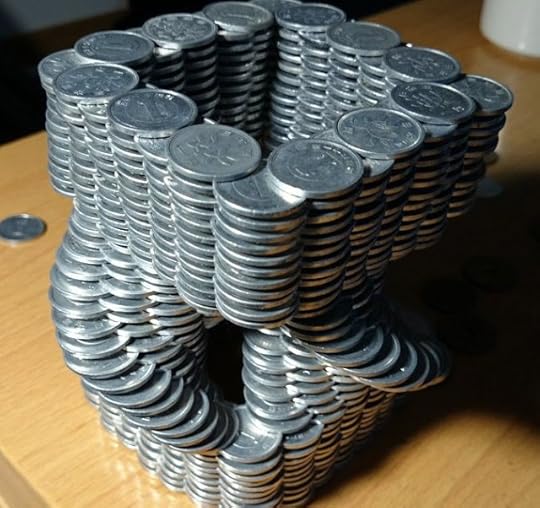
From tall stacks of coins with the curved bottom of a spoon as the base, to columns made from intertwining rows of coins and even some designs that incorporate small spheres, there seems to be no limit to what thumb_tani (Tanu) can do. His increasingly intricate design have prompted some people to suggest that he muse be using glue to keep his creations together. But he shut them all down by posting a video of him building one of his incredible structures.

Tanu says that stacking hundreds of coins in such precarious positions requires extreme concentration and self-control, as a simple shake of his fingers can send the whole structure tumbling down.

The amateur artist has a Twitter following of over 38,000 people who can wait to see what design he comes up with next. His works have been featured on hundreds of Japanese sites and blogs, and he even made headlines in international media, after some of his photos went viral, at the end of last year.

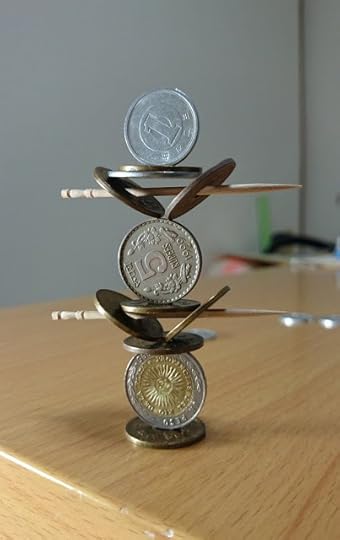

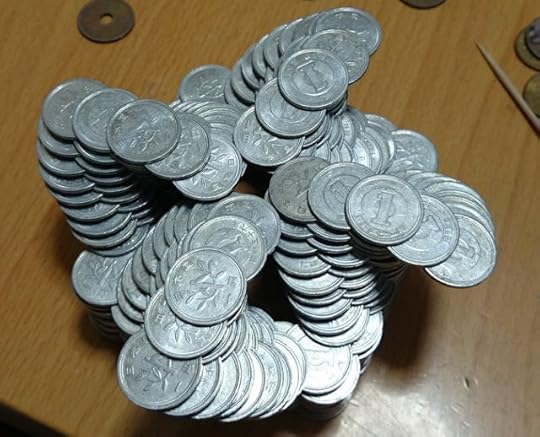

Clancy's comment: Mm ... One slip and it's all over Rover.
I'm ...
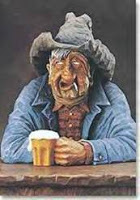

Published on December 02, 2017 14:02
December 1, 2017
2 December 2017 - ROLLING PICTURES

ROLLING PICTURES
G'day folks,
Yep, time to check out some more fine examples of those pictures that move.

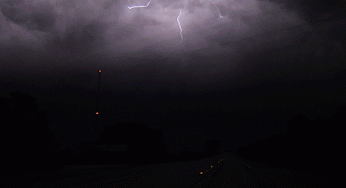


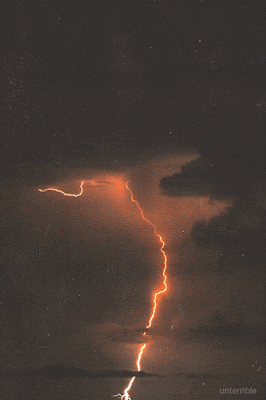
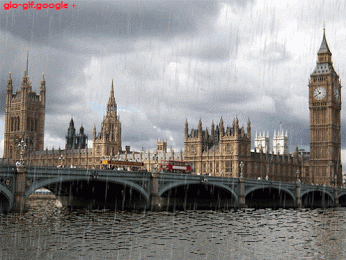
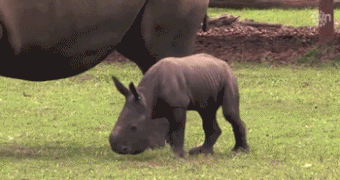
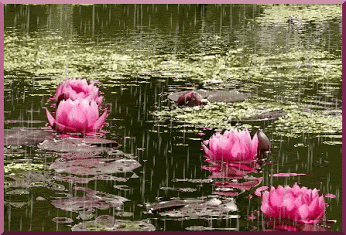
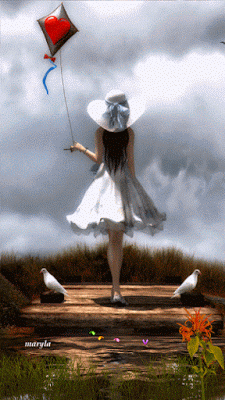
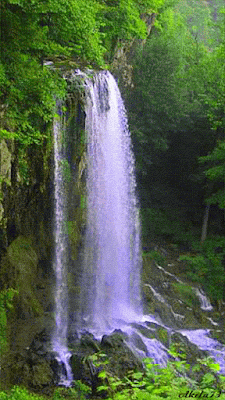
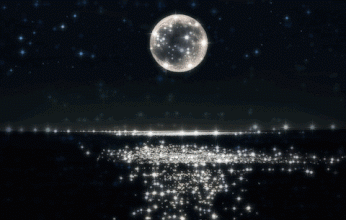
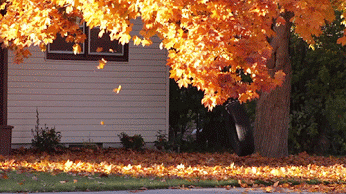


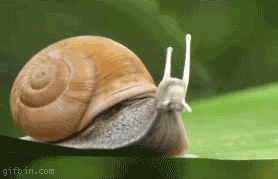


Clancy's comment: I loved the rain ones, plus the little karate kid.
I'm ...

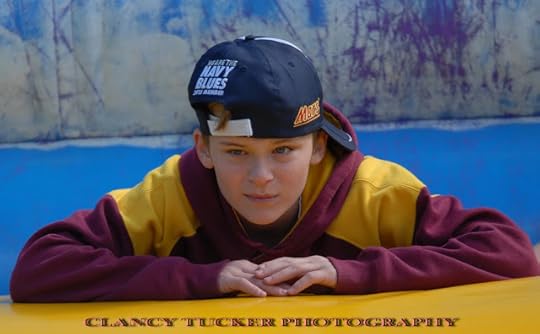
Published on December 01, 2017 13:22
November 30, 2017
1 December 2017 - 'FREDERICK THE GREAT' – A STALLION
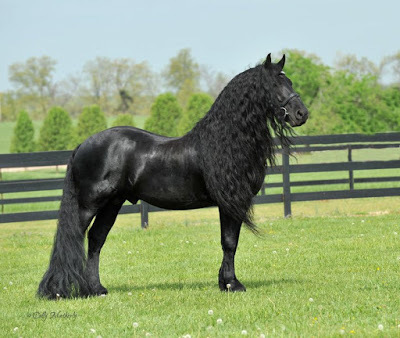
'FREDERICK THE GREAT' - A STALLION -
G'day folks,
Welcome to a famous stallion that has hit the big time via social media.
“Real-life Black Beauty”, “Storybook Stallion”, or “Fabio of Horses” are just some of the flattering nicknames people use when referring to Frederick the Great, a 16-year-old Friesian stallion and proud holder of the unofficial title of “world’s most beautiful horse”.

Born in the Netherlands, Frederick was imported into the United States by Stacy Nazario, owner of Pinnacle Fiesians, a horse farm in Arkansas, when he was 6 years old.
Nazario said that she knew there was something special about him the first time she saw him, and her instincts proved correct, as Frederick grew into a magnificent specimen that has been known to make humans jealous of his looks.

Photos of Frederick the Great went viral last summer, after being shared thousands of times on various social media platforms. People just couldn’t believe how gorgeous he looked, with his muscular body, shiny coat and a flowing black mane that seemed to dance in the wind, and some were convinced that he was by far the most beautiful horse on the planet. That’s how he got his titles of “world’s most handsome stallion” and “world’s most beautiful horse”.
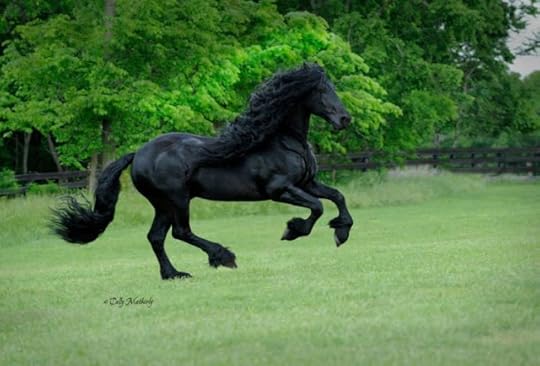
But while 2016 may have been Frederick’s breakout year, Stacy Nazario says that her beautiful Friesian has had a loyal following for many years. “He’s always been popular with his fanbase,” she told The Guardian, last year. “Before this, his videos and his photographs have been all over. He’s got fans from all over the world.”

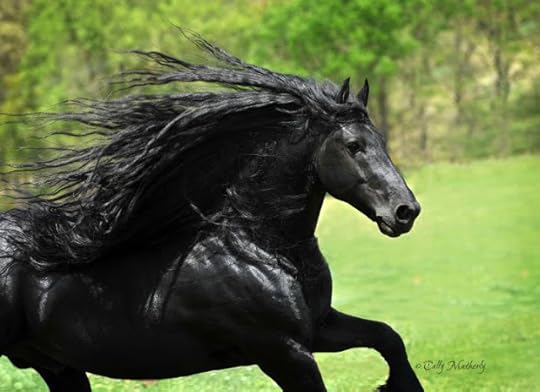

According to his owner, Frederick is quite aware of his good looks, and loves nothing more than to be the center of attention during dressage competitions.
But despite being compared to the equine version of a hot-blooded hunk, Frederick the Great is apparently a very gentle giant, with a mellow personality. “His temperament is sweet. I could put a baby right next to him and he would just be gentle with it. He’s a gentle giant,” Stacy Nazario said. “He’s that gentle and sweet of a horse, which is ingrained in his personality that will not change.”

Clancy's comment: Wow, pretty stunning creature, eh?
I'm ...


Published on November 30, 2017 13:10
November 29, 2017
30 November 2017 - TOP QUOTES

TOP QUOTES
G'day folks,
Yep, it's time for some more inspiring quotes.



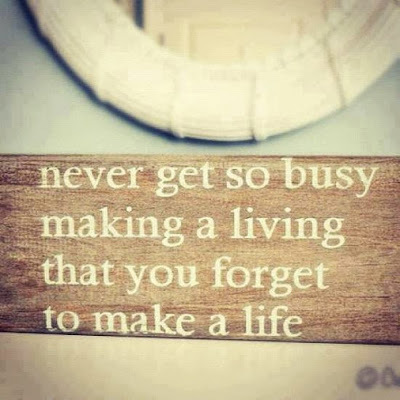

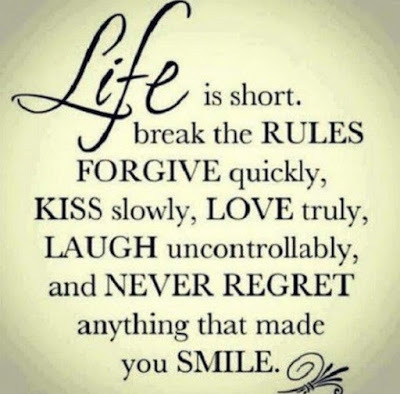



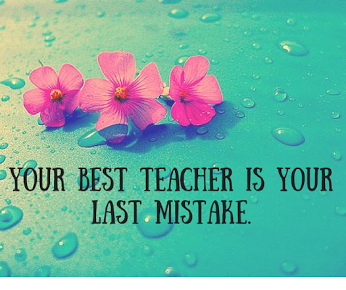

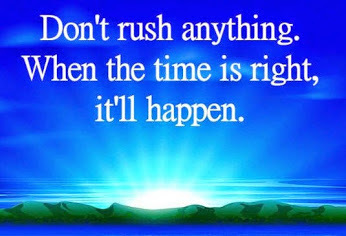

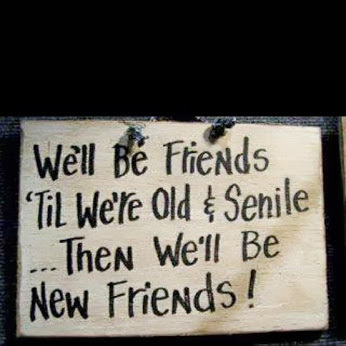

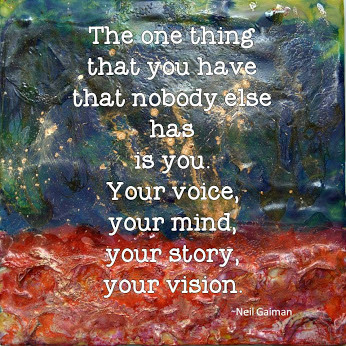

Clancy's comment: Yep ....
I'm ...
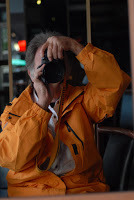

Published on November 29, 2017 13:22
November 28, 2017
29 November 2017 - INTERESTING FACTS ABOUT THE JAGUARUNDI
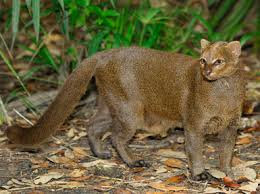
INTERESTING FACTS ABOUT THE JAGUARUNDI
G'day folks,
Welcome to a creature I had never heard of before today. The jaguarundi or eyra cat is a small wild cat native to southern North America and South America. It has been listed as Least Concern on the IUCN Red List since 2002. Its presence in Uruguay is uncertain.
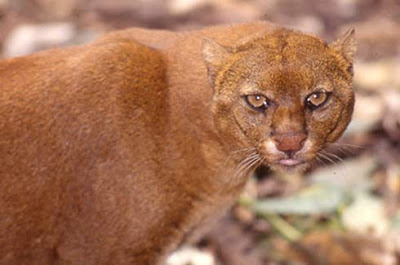
The Jaguarundi is a very unusual cat, with a long slender body, shorter legs and a small flattened head with short rounded ears, and the cat is often described as having a weasel-like appearance.Sometimes referred to as the ‘otter-cat’, the Jaguarundi is closely related to the puma.One of the smaller New World cat species, they are about twice the size of a small house cat. Jaguarundis are unusual as they do not have spots, unlike most other South American small cats.Jaguarundis are very elusive animals and there is still a lot to be learnt about the cats.Population numbers of the Jaguarundi are much less than once thought. Their shy nature makes it even more difficult to estimate their current population size.They have some of the most variable colourations of wildcats with two main groups: a dark morph which ranges from black, brownish and greys and a paler red morph ranging from tawny yellow to a bright chestnut red.For many years, it was thought the two morphs were separate species but it is now known both colours can occur from the same litter.Generally, it seems the darker morph is more common in rainforest habitats and the paler morph in drier environments.Different from many cats, the Jaguarundi tends to be most active during daytime rather than dawn or dusk.Jaguarundis are very vocal cats, with at least 13 distinct calls, ranging from a chirp, purr, whistle or even a scream. Choosing to spend more time on the ground than many other big cat species, the Jaguarundi tends to hunt small mammals, birds and reptiles from the ground. They have been seen jumping as high as 2 metres off the ground to swipe a bird from the air!Jaguarundis have very large home ranges, some males were recorded as having a range from 88-100km2! Females tend to have much smaller ranges – varying from 13-20km2.The Texan population of Jaguarundi may now only consist of a few remaining cats with habitat loss having caused an overall population decline.In parts of North America there have been some reintroduction efforts but these are hindered by the lack of scientific knowledge about the animal, their needs and behaviours.The breeding behaviour is not well known; scientists are unsure whether Jaguarundis raise cubs alone or as a pair. Females will have between 1-4 young which will remain in the den for around 28 days.The Jaguarundi are not hunted for their fur but will often still be caught in traps set for other animals such as the ocelot. Quick FactsType: MammalDiet: CarnivoreLife span: 15 yearsSize: LengthWeight: 3 – 9kgs (10-20lbs)Habitat: Rainforest, swamp, savanna, savanna woodland, thickets and semi-arid thorn scrubRange: Southern Texas to central ArgentinaScientific name: Puma yagouaroundi
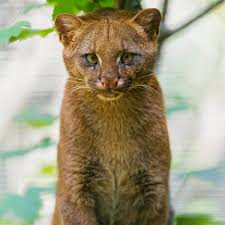
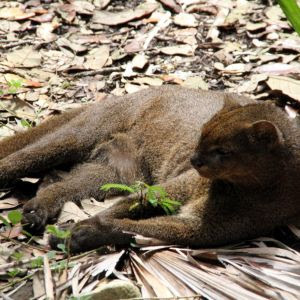
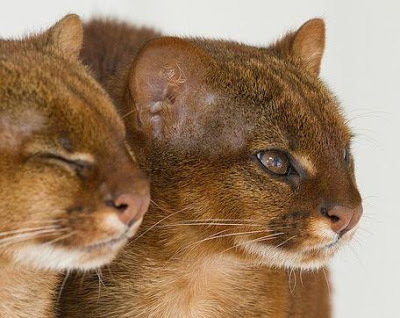
Clancy's comment: They look very similar to a domestic cat, but I bet they can pack a mean punch.
I'm ...
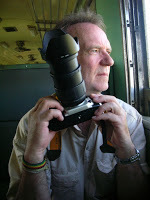

Published on November 28, 2017 11:57



